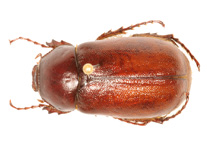Abstract
Tibiotarsi, particularly their chaetotaxy, vary from species to orders in Collembola. Symphypleona, Poduromorpha and Isotomidae have been shown to possess characteristic patterns of tibiotarsal chaetotaxy, but the patterns in Entomobryoidea and Tomoceroidea, where a strong plurichaetosis is the rule, remains undocumented. The tibiotarsal chaetotaxy of first instars of 11 species of the main Entomobryidae subfamilies is described here for the first time. A basic pattern of five whorls with eight chaetae per whorl was found to occur in all examined species of Entomobryidae, with limited variations in the distal and proximal whorls. This pattern is similar to that of Symphypleona. Two hypotheses appear possible according to existing phylogenies, making it difficult to determine whether this obvious homology in tibiotarsal chaetotaxy is a plesiomorphy, which appeared independently in both superfamilies, or is a synapomorphy. We conclude that the primary chaetotaxy of tibiotarsus appears to be of high taxonomical value at suprafamilial but not at generic or tribal level.

